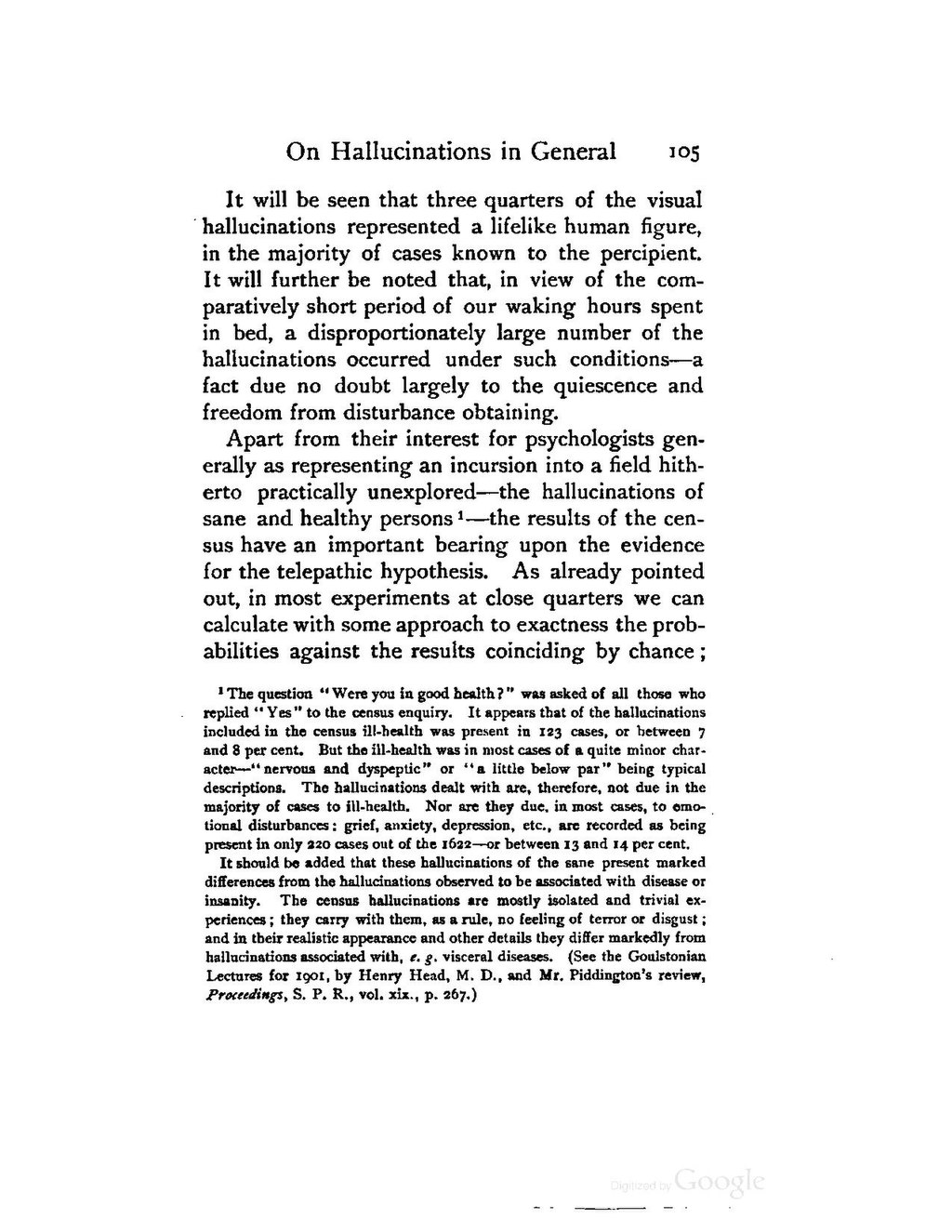It will be seen that three quarters of the visual hallucinations represented a lifelike human figure, in the majority of cases known to the percipient. It will further be noted that, in view of the comparatively short period of our waking hours spent in bed, a disproportionately large number of the hallucinations occurred under such conditions—a fact due no doubt largely to the quiescence and freedom from disturbance obtaining.
Apart from their interest for psychologists generally as representing an incursion into a field hitherto practically unexplored—the hallucinations of sane and healthy persons[1]—the results of the census have an important bearing upon the evidence for the telepathic hypothesis. As already pointed out, in most experiments at close quarters we can calculate with some approach to exactness the probabilities against the results coinciding by chance;
- ↑ The question "Were you in good health?" was asked of all those who replied "Yes" to the census enquiry. It appears that of the hallucinations included in the census ill-health was present in 123 cases. or between 7 and 8 per cent. But the ill-health was in most cases of a quite minor character—"nervous and dyspeptic" or "a little below par" being typical descriptions. The hallucinations dealt with are, therefore. not due in the majority of cases to ill-health. Nor are they due. in most cases, to emotional disturbances: grief. anxiety, depression, etc., are recorded as being present in only 220 cases out of the 1622—or between 13 and 14 per cent.
It should be added that these hallucinations of the sane present marked differences from the hallucinations observed to be associated with discue or insanity. The census hallucinations are mostly isolated and trivial experiences; they carry with them. as a rule, no feeling of terror or disgust; and in their realistic appearance and other details they differ markedly from hallucinations associated with, e. g. visceral diseases. (See the Goulstonlan Lectures for 1901, by Henry Head, M. D., and Mr. Piddington's review, Proceedings, S. P. R., vol. xix.. p. 267.)
